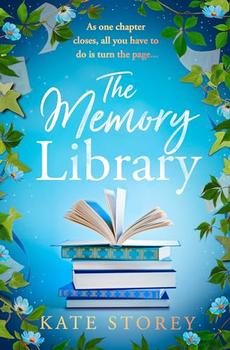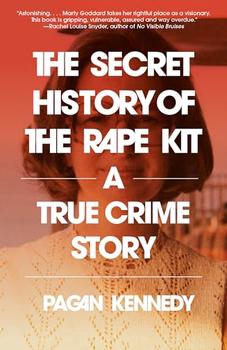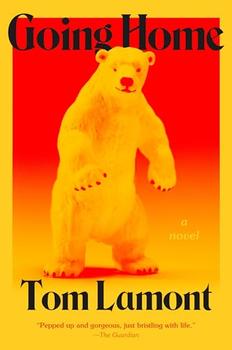
How to pronounce Ruta Sepetys: Roota Suh-PET-tees
Ruta Sepetys discusses the inspiration for her new book, Out of the Easy, which allowed her to indulge her love of history while researching New Orleans' dramatic past.
Ruta Sepetys discusses Out of The Easy
How did you create Josie Moraine?
Years ago I was part of a mentoring program for young women. I met girls who were
swept into the dysfunctional current that surrounded their home life. But I also met
young women who made difficult decisions and divorced themselves from a negative
environment. That's incredibly hard. Those girls inspired me. They taught me that we
can learn to fly, even if we're born with broken wings. The idea of that broken, yet
beautiful bird became Josie Moraine.
Why New Orleans?
My introduction to New Orleans came through a vintage pair of opera glasses I received
for my birthday. The glasses, still in their original case from the jeweler in New Orleans,
were engraved and dated as a gift from someone named Willie. I'm nuts about history,
so I hired a researcher to trace the origin of the glasses. I learned that Willie was a
woman in the French Quarter. And the jeweler who sold Willie the glasses? Poisoned.
He ate a dozen oysters in the Quarter and kicked the bucket. My fascination with New
Orleans was born.
And what about brothels?
One rainy day in Los Angeles I jumped into a book store to avoid getting wet. I saw The
Last Madam: A Life in the New Orleans Underworld by Christine Wiltz on display. I
snapped it up. The book chronicled the life of New Orleans madam, Norma Wallace. I
read it in one sitting, fascinated with every detail. Fast forward twelve years and I was
standing under the Spanish moss in front of Christine Wiltz's home in New Orleans. We
spent a long day discussing madams, gangsters, and how Norma ran her business.
Meeting Christine was such a highlight and inspired me on so many levels!
How did you research the book?
I took several trips to New Orleans and spent many days at the Williams Research
Center. I also combed library archives. I walked Josie's paths that I describe in the
book. Christine Wiltz connected me with people who had intimate knowledge of the
underbelly of the city. My meetings were both fascinating and terrifying. I couldn't sleep
at night. Scandals, murders, crooks and crime–all beyond your wildest imagination.
And as a writer, I loved it!
The most incredible part of my research was being allowed into Norma Wallace's former
brothel. I based Willie's house on Norma's. Standing in Norma's old bedroom, I
imagined how Josie would bring Willie her coffee, where she'd count the money. I saw
the girls' rooms upstairs, the hiding places, and the escape route through the courtyard
when the cops would show up. I could hear the voices of the characters in my head so
clearly. I hope their personalities come across in the book.
Why 1950?
I chose the historical setting of post-war America because it's complex and often
misunderstood. Following WWII, the U.S. experienced unparalleled prosperity.
But "The American Dream" for some became the quiet nightmare for others.
Societal pressures to conform were severe and deep tensions developed across social,
racial, and gender lines. People escaped these pressures in various ways and the
alluring "come hither" of New Orleans was one of them. But for some, "The Big Easy"
was more than they could handle. People kept a lot of secrets back then. Illness and
family troubles were often hidden from the public. Sometimes, what looked perfect on
the outside was quietly rotting on the inside.
Did the time period inspire the creation of the characters?
Well, the more I researched the time period, the surface sparkle faded to reveal a fair
amount of pain. Learning of that pain helped me create characters like Willie, Patrick,
Jesse, and Josie, who are all full of secrets, yet also quietly full of love. I then tried to
contrast that pain with people like Cokie, Forrest Hearne, Charlotte, and Miss Paulsen –
beautiful souls whose kindness and encouragement plant seeds of hope that eventually
sprout courage.
And why Smith?
When I was fourteen I visited my older sister who was doing her undergrad at Smith.
I was impressed not only by the incredibly intelligent women, but by the varied
backgrounds they came from. My preconceptions had been all wrong. The diversity
made an inspiring impression on me, so much so that decades later I wove it into this
novel.
So how would you sum up the book?
I'd say it's a story about decisions and how they shape our destiny. Teenagers are
constantly facing difficult decisions and are often worried about being perfect. But some
of the most interesting people are those we can't categorize. Those are the characters I
love to create, those who remind us that beauty can be perfect in imperfection. So I put
a character who is perceived as broken in a situation of decision making.
Sometimes, small acts of kindness and respect can impact young people more than
we'll ever know. It could be a teacher, like Miss Paulsen, who believes in a student. Or it
could be a David Copperfield, like Forrest Hearne, who inspires someone to dream big.
Right now there's a teenager somewhere who is about to put on shoes that will take
them in the wrong direction. We all know how easy it is to make bad decisions. But who
knows, maybe they'll decide to put on the brown loafers…and step out of the easy.
Unless otherwise stated, this interview was conducted at the time the book was first published, and is reproduced with permission of the publisher. This interview may not be reproduced or reprinted without permission in writing from the copyright holder.



The Secret History of the Rape Kit
by Pagan Kennedy
The story of the woman who kicked off a feminist revolution in forensics, and then vanished into obscurity.

Going Home
by Tom Lamont
Going Home is a sparkling, funny, bighearted story of family and what happens when three men take charge of a toddler following an unexpected loss.
Your guide toexceptional books
BookBrowse seeks out and recommends the best in contemporary fiction and nonfiction—books that not only engage and entertain but also deepen our understanding of ourselves and the world around us.